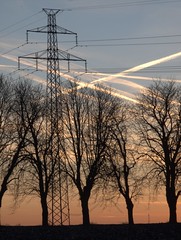In recognition of the 223rd anniversary of Ben Franklin’s death, we here at LGBG feel that it is important to remember and salute this visionary and his accomplishments, particularly those relative to the green movement.
Ben Franklin was born on January 17, 1706 in Boston, Massachusetts and died on April 17, 1790 in Philadelphia, Pennsylvania. Franklin was a printer by trade and a scientist, a librarian, inventor and statesman. He was internationally renown for his work to harness electricity with the invention of the lightning rod. His values were consistent with the green movement in that he espoused thrift, hard work and education.
In addition to inventions of the Franklin stove, bifocal glasses and a flexible urinary catheter, Ben Franklin also was a social innovator. He is credited with the “pay it forward policy whereby an individual in receipt of a good deed repays the assistance by doing something good for someone other than his/her benefactor. This practice has evolved into an international movement of random acts of kindness.
Ben Franklin was a man ahead of his time and a proponent of green living and sustainability, as evidenced by his influence on the then emerging science of population study and demographics. He was an astute observer of population growth trends, both in the United States, as well as in Europe. He acknowledged the importance of maintaining an adequate food supply to accommodate the fast-growing U.S. population. Out of concern for economic development and the reliance on the shipping industry for transportation of goods and people, Franklin studied the currents in the Atlantic Ocean, and gulf stream charts and made recommendations on navigation currents so as to control sailing time to various destinations. He is best known, perhaps, for his work with electricity, and he also delved into research on refrigeration and evaporation.
At an early age, Ben Franklin adopted a set of virtues which he used to guide his life. Several of these virtues are consistent with the tenets of the green movement and sustainable living.
1. “Temperance. Eat not to dullness; drink not to elevation.”
2. “Order. Let all your things have places.”
3. “Resolution. Resolve to perform what you ought.”
4. “Frugality. Waste nothing.”
5. “Moderation. Avoid extremes.”
6. “Cleanliness. Tolerate no uncleanliness.”
7. “Humility.”
Benjamin Franklin was a visionary, who fully appreciated the gift of this earth and lived his entire life dedicated to healthy living, industry and the protection and progression of mankind. His accomplishments cannot be understated, and our current Earth Day celebration would be lacking without the observance of this great man. He was a true example of what it means to live green, be green.
_______________
Sources for this article:
1. http://en.wikipedia.org/wiki/Benjamin_Franklin.
2. http://www.ealmanac.com/2974/numbers/the-thirteen-virtues-of-benjamin-franklin/.











